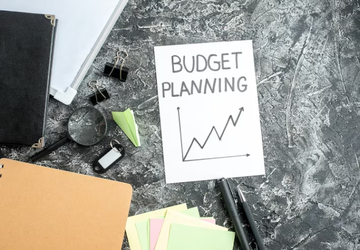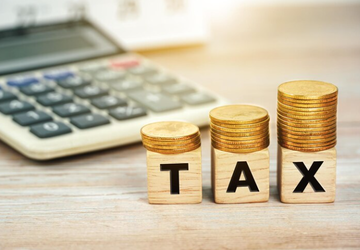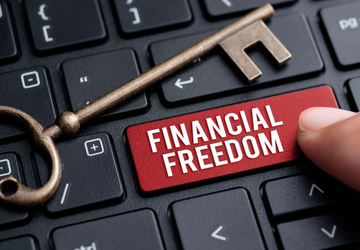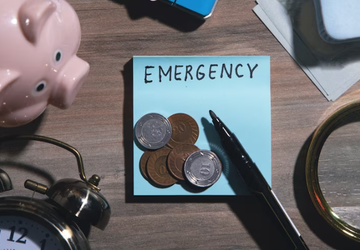How to Create a Foolproof Emergency Fund for Security
Life is filled with surprises, and not all of them are good. That's why having a dependable emergency fund is like having a financial safety cushion for those unexpected twists life brings. An emergency fund can help you when unexpected costs, such as medical bills, car fixing, or job loss, come your way.
In this guide, we'll take you through the simple steps to create a strong emergency fund for your peace of mind.
Step 1: Set Clear Goals
Before saving money, determine the right amount for your emergency fund. A common suggestion is to aim for enough savings to cover your living expenses for three to six months. But remember, your situation is important. Are you the main breadwinner for your family? Do you have people who rely on you financially?
Keep these things in mind when setting your savings goal. Consider putting your money in a money market account, which allows you to access your funds quickly without any penalties.
Step 2: Open a Dedicated Savings Account
Your emergency fund needs a safe and easily accessible home. Open a separate savings account specifically for this purpose. Choose a simple, no-frills account with minimal fees and good interest rates. This account needs to be distinct from your usual checking or savings account so you're less likely to use it for non-emergencies.
Step 3: Start Small, but Start Now
Creating an emergency fund might feel overwhelming, especially when you're tight on money. The trick is, to begin with a small amount and stick to it as a routine. Even if you can only set aside a few dollars each week, it's a good beginning. As your finances get better, slowly increase your contributions. The crucial part is being consistent.
Step 4: Cut Unnecessary Expenses
Building an emergency fund might mean making some changes. Take a look at your monthly spending and find places where you can spend less. It could be eating out less often, ending subscriptions you don't use, or choosing more affordable options for your daily coffee. Each bit of money you save can go into your emergency fund.
Step 5: Build a Budget
Budget helps you see how much you earn and spend, ensuring you're on track to save for emergencies. You can use budgeting apps or simple spreadsheets to create and keep your budget. Stick to it consistently, and you'll be surprised by how much you can put away.
Step 6: Make Saving Easy
To save for unexpected situations effortlessly, arrange automatic transfers from your primary bank account to your emergency savings account. Treat it like a monthly bill you have to pay. This way, you won't forget or spend the money on other things.
Step 7: Windfalls and Bonuses
Whenever you get extra money unexpectedly, like tax refunds, work bonuses, or gifts, consider putting some of it into your emergency fund. These surprise funds can help you save even more quickly.
Step 8: Stay Flexible
Life doesn't always go as planned, and sometimes, you might need to use your emergency fund for a real crisis. That's okay! It's there for that exact reason. Just remember to replenish it as soon as possible once the emergency is over.
Step 9: Keep it Liquid
An emergency fund should be easy to reach. While investing your money can make you more, it's not the best choice for an emergency fund. Put your emergency fund in a high-yield savings or money market account to get your money out fast without any extra charges.
Step 10: Avoid Debt Like the Plague
Part of creating financial security is avoiding unnecessary debt. When you use your emergency fund, do your best to avoid adding new debt on top of it. Prioritize paying off high-interest debts to free up more money for your fund.
Step 11: Regularly Review and Adjust
As time goes by, your financial situation may change. Your expenses could increase, or your income might fluctuate. Periodically review your emergency fund goal and adjust it accordingly. Make sure your fund remains aligned with your current needs.
Step 12: Celebrate Milestones
Celebrate your progress when you reach milestones along the way. Whether hitting your first $1,000 or reaching half your goal, recognizing your accomplishments can motivate you to keep going.
Step 13: Expand Your Knowledge
Financial literacy is key to long-term financial security. Continue educating yourself about personal finance, investing, and money management. The more you know, the better you'll be equipped to handle everyday expenses and unexpected emergencies.
Exploring Advanced Financial Security Strategies
Now that you've built your emergency fund, explore more advanced strategies to enhance your financial security. These steps can help you go beyond the basics:
1. Build Multiple Income Streams
Dependence on just one source of money can be risky. Look for ways to mix up your earnings, like starting a small business, investing in rental properties, or making money through investments. Having several income sources can help you stay financially secure.
2. Invest in Yourself
Think about putting time and effort into your education and improving your skills to boost how much you can earn. This might involve taking courses, certifications, or even pursuing a higher degree. Continuous learning can lead to better career opportunities and financial security.
3. Optimize Your Tax Strategy
Work with a tax professional to optimize your tax strategy. Explore tax-efficient investments and take advantage of tax deductions and credits to minimize tax liability. This can leave you with more money to save and invest.
4. Consider Estate Planning
Estate planning goes beyond creating a will. It involves strategies for wealth preservation, asset protection, and minimizing estate taxes. Consult an estate planning attorney to develop a comprehensive plan that aligns with your goals.
Conclusion
Creating a foolproof emergency fund doesn't require complex financial strategies or a high-income job. It's about setting clear goals, making small but consistent contributions, and staying disciplined. So, start today, no matter how small the first step may seem. Your future self will thank you when that rainy day comes, and you're prepared for it.













